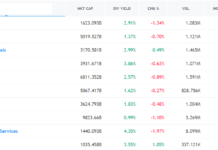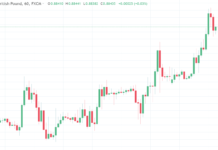Nowadays, investing in PAMM accounts is one of the least risky ways to make a passive income online. I’ve been involved in investing in PAMM accounts of different Forex brokers for almost 2 years now. So I decided to share my experience in PAMM investing.
Before reading the article and writing your questions in the comments section, I recommend to watch this video. It’s not long but covers the biggest part of questions on the topic.
I sincerely hope that this article will shed a light on PAMM investing for novice investors. Let’s start with the definition of PAMM accounts and how they evolved.
Table of Contents
What is a PAMM account?
The abbreviation PAMM stands for Percent Allocation Management Module. It’s a system that defines the way profits and losses are distributed between an investor and a manager. In other words, PAMM is a form of pooled money trading, where an investor allocates their funds to a qualified trader (money manager) intending to make profits.
PAMM accounts are popular with investors who don’t have time to learn the ins and outs of trading or lack the necessary trading knowledge. In this case, an investor can choose a skilled trader to manage their money for them. A trader provides investors with an offer that regulates the business relationship between a trader and an investor and specifies a percentage charged by a trader.
Profits or losses are distributed between the investors proportionally to their investment amounts. The third participant in the PAMM system is a Forex broker that brings together investors and traders.
Investing in PAMM accounts for rookie traders
The best way to explain how PAMM investing works is by taking a concrete example. Suppose, a Forex trader has a $1,000 deposit with the average monthly profitability of 5%. This way, the trader earns $50 a month. If the trader had a larger capital, they would make much more money at the same profitability.
At some point, the trader decides to open a PAMM account. The trader attracts investors and uses their capital in trading. Suppose, the trader managed to acquire 2 investors. Investor 1 invested $1,000 and Investor 2 invested $3,000. This way, the overall trading capital is now $5,000 ($1,000+$1,000+$3,000).
At the average profitability of 5%, the PAMM account generates $250 of profit. As a reward for their services, the trader gets 40% of the investors’ profits. Take a look at the table below to see how the profits are distributed among the participants:
| Invested capital, $ | Profits before distribution, S | Profits after distribution, $ | |
| Trader | 1,000 | 50 | 130 |
| Investor 1 | 1,000 | 50 | 30 |
| Investor 2 | 3,000 | 150 | 90 |
| Total | 5,000 | 250 | 250 |
You can see that the PAMM account is lucrative for both the trader and the investors. Losses are distributed between the participants the same way as profits. However, in this case the trader doesn’t get a reward.
Before PAMM accounts were introduced, investors had to work with their selected trader directly. The investor provided a password to their trading account to the trader. The investor needed to have a solid trading deposit because no proficient trader would manage an account with $100 in it. Another way was to hand over the cash directly to the trader. This method was associated with high risks because the trader could disappear with the investor’s money.
Compared to these outdated methods, a PAMM account has several indisputable advantages:
- PAMM broker guarantees that both the trader and the investor will fulfill their obligations towards each other.
- PAMM broker provides investors with the trader’s trading statistics, acting as an independent monitoring agency.
- Investors don’t need to worry that the trader may disappear with their money. The trader can only trade with the investor’s money, without the possibility to withdraw it.
- PAMM platform is convenient to use. The investor can credit their account once and then distribute the money among several traders.
- The trader risks not only the investors’ money but also their capital. Plus, the investor can check how much money the trader has in their account. Experienced investors are unlikely to trust a trader with a small capital.
- Investors have access to traders’ ratings, which makes choosing a reliable trader fast and easy.
- The investor doesn’t have to spend hours discussing the investment terms with the selected trader. You can read all the terms in an offer that is signed in one click.
How to choose the right PAMM account
Now that we’ve cleared up what a PAMM is and how it works, the next logical question is how to choose the best PAMM account. The fact that different brokers offer different filters to select PAMM accounts makes the choice even harder. I’ve come up with a list of the key parameters that you’ll find on any PAMM platform.
- Account lifetime
When browsing through PAMM accounts, the first thing I pay attention to is how long the account has been active. This is a sure way to filter out inexperienced traders that still lack the necessary expertise to manage other people’s money. Moreover, an account with a long history can give more information on the performance of a trader. The older an account, the better. I recommend choosing PAMM accounts no younger than 6 months. An exception can be made for new accounts opened by consummate traders whose expertise you trust.
- Maximum drawdown
The next filter you should apply is the maximum drawdown. This parameter can give you a clear idea of how high the risk of investing in the selected account is. For novice investors, the maximum drawdown should not exceed 40%.
- Profitability
Potential profitability is the third most important parameter after account lifetime and drawdown. The profitability you choose depends on your individual goals. I recommend analyzing this parameter in conjunction with the maximum drawdown because higher profits always come with higher risks.
From my experience, I can say that the maximum drawdown/profitability ratio shouldn’t exceed 1:3. For an account with a 5% profitability, the maximum drawdown should be at 15%. It should be noted that few accounts meet this requirement and those that do deserve your close attention.
- Trader’s capital
When choosing a reliable PAMM account, you should also consider how much capital your selected trader has. The larger the trader’s equity, the higher the trader’s risks. This parameter must be analyzed in conjunction with the total capital (investors’ capital + trader’s capital). Trader’s equity should be no less than 10% of the total amount.
- Investors’ capital
This is an easy one. The trader, who has managed to attract a big amount of investors’ funds, is likely to be a professional. For the appropriate ratio between the investors’ capital and the trader’s capital, see the paragraph above.
PAMM monitoring
We’ve already covered the main parameters to consider when choosing an effective PAMM account. While these parameters are freely available on the official website of your selected broker, you can also use a PAMM monitoring service.
A PAMM monitoring platform allows investors to select, analyze, and track PAMM accounts. For your convenience, I’ll share with you the monitoring services I’m using regularly.
Bottom line
Wrapping up this post, I’d like to emphasize one important thing. Although a smart and elaborate system, a PAMM account is just an investment tool. Whether you can make money with this tool depends entirely on you. If you’re just starting your investment career, it’s best to ignore PAMM accounts with high profitability. Chasing a quick buck won’t take you far.
My tip is to focus on conservative traders, with profitability no higher than 100% a year. Such profitability usually comes with reasonable risks. Also, you should keep in mind that the trader’s past profits don’t guarantee you profits in the future.
Out of all investment tools in my trading portfolio, PAMM accounts generate the biggest part of my profits. While PAMM accounts are a potent source of passive income, you shouldn’t be blinded by its advantages. Remember that risks that are an integral part of the PAMM investment scheme, so be sure to educate yourself on this important issue.





